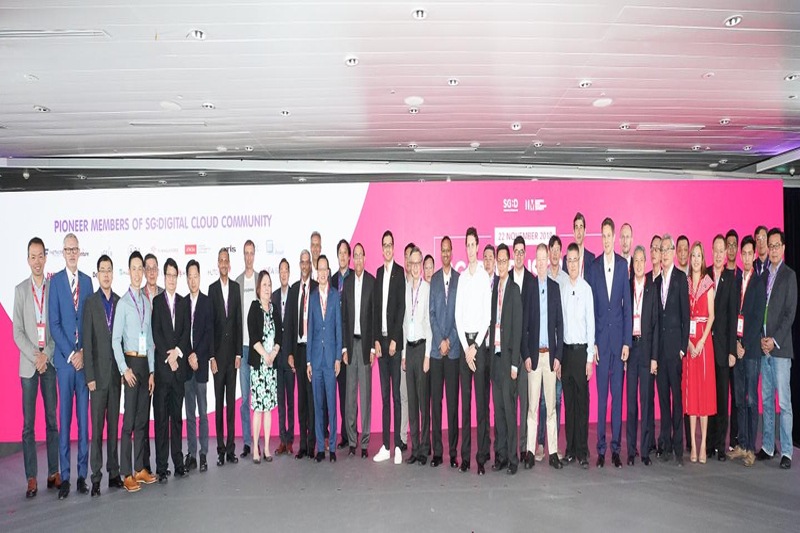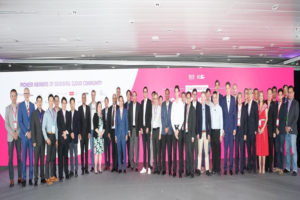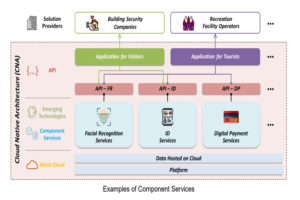
 30 Companies and associations have pledged their support for the Cloud Native Architecture by joining the first batch of SG:Digital Cloud Community. The Community promotes Cloud Native Architecture’s adoption since it underpins the realisation of Services 4.0.
30 Companies and associations have pledged their support for the Cloud Native Architecture by joining the first batch of SG:Digital Cloud Community. The Community promotes Cloud Native Architecture’s adoption since it underpins the realisation of Services 4.0.
Services 4.0 is Singapore’s response to socioeconomic shifts brought about by emerging technologies. The technologies are identified in the Services and Digital Economy Technology Roadmap (SDE TRM), launched by Minister for Communications and Information, Mr S Iswaran yesterday.
SDE TRM was developed by the Infocomm Media Development Authority (IMDA) to refresh the Technology Roadmap. Launched in May 2018, the roadmap is meant to guide IMDA’s industry development plans and regulatory approaches for the infocomm and media (ICM) sector. The updated roadmap provides an outlook of the digital technology landscape over the next 3 to 5 years, and identifies nine key technology trends about AI, cloud, blockchain and APIs.
The services industry is important to Singapore for various reasons. “Firstly, it contributes to nearly 70% of our GDP and it employs up to 75% of our workforce. It embodies a very broad spectrum of enterprises ranging from MNCs, LLEs, to the SMEs and start-ups. They are engaged in a wide range of activities – from logistics to ICM, banking and insurance to transportation. The services sector is a key enabler of our economy. It has in fact been the mainstay of our economy in terms of the evolution of how we have grown, and it holds much promise in terms of for future growth, provided we are able to move swiftly, adapt to the technology trends and perhaps more importantly capitalise on them and turn them into strengths and a competitive advantage for us,” explained Minister Iswaran.
A Cloud Native Architecture is key to bringing the services industry to the forefront.
The Minister said, “Cloud Native Architecture is not just about shifting a company’s on-premise resources onto Cloud. More fundamentally, Cloud Native Architecture is a way to build and run applications on the cloud with flexible modular components, allowing companies to amend their applications quickly, and to scale up or down as required. This is in contrast to the conventional development of applications as a block where it could take weeks or even months for companies to amend their applications and redeploy new solutions. Cloud Native Architecture allows solution providers to be more nimble and responsive to customers’ needs and at a lower cost.”
The Singapore Government Technology Stack is an example of a Cloud Native Architecture.
With so much talk about cloud and on-going migrations, it would appear that everyone is embracing the platform.
Surprisingly, this is not so. According to one study, only 9% of global firms have succeeded in transitioning to Cloud Native. This is out of a possible 71% which have indicated their interest in transition.
There is a fine line of difference between Cloud Native and Cloud Ready. To be cloud ready, an organisation has applications that are built for use on a single machine or on-site server. They are modified enough to run in the cloud, but do not have the innate flexibility that comes with programs designed to take advantage of operating in a cloud environment.
Cloud Native, on the other hand, refers to an approach where applications are created to take advantage of the cloud computing delivery model. Unlike a Cloud Ready model, Cloud Native takes a “cloud first” approach. Software is designed specifically to be deployed on the cloud, and it consists of smaller discrete modular components. Hence it is highly scalable and flexible, compared to the Cloud Ready phase.
It is a Cloud Native environment which the ICM ecosystem is aiming towards. Within the ecosystem, there are three supporting tenets – Multi-Cloud, emerging technologies offered as component services and API enabled.
Multi-cloud involves the distribution of cloud assets, software, applications, etc. across several cloud environments. Businesses have more choice in vendors and solutions, leading to more rapid deployment and adoption of services on Cloud Native Architecture.
A component service is a well-defined piece of business functionality offered as a service which is self-contained, reusable and encapsulated in code. Facial recognition technology is an example. Service providers can combine multiple emerging tech component services to create highly innovative solutions faster.
 The third tenet, an API (Application Programming Interface), is used along with component services are expected to reduce the time to market for various products/services and lower the cost of build by “plugging in” with open API. Deploying APIs can also help extend the reach of existing services, and potentially enable new revenue streams.
The third tenet, an API (Application Programming Interface), is used along with component services are expected to reduce the time to market for various products/services and lower the cost of build by “plugging in” with open API. Deploying APIs can also help extend the reach of existing services, and potentially enable new revenue streams.
Of the companies which have pledged to adopt a Cloud Native Architecture, sentiments are positive. The thirty companies represent a diverse range of sectors, from academia, to financial institutions and manufacturing.
Mr Ravinder Singh, President, Electronic, ST Engineering, said, “Services 4.0 will be the transformational and disruptive growth engine for businesses to compete at the global stage. Companies will need to rethink their business model by embracing platforms, data, and global networks. As a leading technology company, we are excited to chart the early advance technology deployments, and we are committed to build the capabilities to drive the innovation and the adoption of the Cloud Native Architecture. We are also collaborating closely with various Government agencies and partners across the ecosystem to develop talent that the industry will require to ride this transformation.”
Thus, the Cloud Native Architecture will build an inclusive ecosystem which provides the environment to reach new frontiers and realise them through the application of emerging technologies.
















